Data Analytics.01. Data selection and capture
- 1. Data Analytics process in Learning and Academic Analytics projects Day 1: Data selection and capture Alex Rayón Jerez [email protected] DeustoTech Learning – Deusto Institute of Technology – University of Deusto Avda. Universidades 24, 48007 Bilbao, Spain www.deusto.es
- 2. Objectives How to tackle an AA/LA project 1. Objectives: what do I want to improve? 2. Data: automated processes for data discovery and later processing 3. Integration, not substitution 4. Technology 5. KPIs: define and test
- 3. Table of contents ● ETL approach ● Data analytics cycle ● Architecture principles ● Requirements ● Components ● Data process ○ Questions ○ Data model ○ Data sources ○ Use cases
- 4. Table of contents ● ETL approach ● Data analytics cycle ● Architecture principles ● Requirements ● Components ● Data process
- 5. ETL approach Definition and characteristics ● An ETL tool is a tool that ○ Extracts data from various data sources (usually legacy data) ○ Transforms data ■ from → being optimized for transaction ■ to → being optimized for reporting and analysis ■ synchronizes the data coming from different databases ■ data cleanses to remove errors ○ Loads data into a data warehouse
- 6. ETL approach Why do I need it? ● ETL tools save time and money when developing a data warehouse by removing the need for hand-coding ● It is very difficult for database administrators to connect between different brands of databases without using an external tool ● In the event that databases are altered or new databases need to be integrated, a lot of hand- coded work needs to be completely redone
- 7. ETL approach Kettle Project Kettle Powerful Extraction, Transformation and Loading (ETL) capabilities using an innovative, metadata-driven approach
- 8. ETL approach Kettle (II) ● It uses an innovative meta-driven approach ● It has a very easy-to-use GUI ● Strong community of 13,500 registered users ● It uses a stand-alone Java engine that process the tasks for moving data between many different databases and files
- 10. ETL approach Kettle (IV) Source: http://download.101com.com/tdwi/research_report/2003ETLReport.pdf
- 11. ETL approach Kettle (V) Source: Pentaho Corporation
- 12. ETL approach Kettle (VI) ● Datawarehouse and datamart loads ● Data integration ● Data cleansing ● Data migration ● Data export ● etc.
- 13. ETL approach Transformations ● String and Date Manipulation ● Data Validation / Business Rules ● Lookup / Join ● Calculation, Statistics ● Cryptography ● Decisions, Flow control ● Scripting ● etc.
- 14. ETL approach What is good for? ● Mirroring data from master to slave ● Syncing two data sources ● Processing data retrieved from multiple sources and pushed to multiple destinations ● Loading data to RDBMS ● Datamart / Datawarehouse ○ Dimension lookup/update step ● Graphical manipulation of data
- 15. Table of contents ● ETL approach ● Data analytics cycle ● Architecture principles ● Requirements ● Components ● Data process
- 16. Data Analytics cycle Challenges ● Data is everywhere ● Data is inconsistent ○ Records are different in each system ● Performance issues ○ Running queries to summarize data for stipulated long period takes operating system for task ○ Brings the OS on max load ● Data is never all in Data Warehouse ○ Excel sheet, acquisition, new application
- 17. Data Analytics cycle Challenges (II) ● Data is incomplete ● Certain types of usage data are not logged ● Data are not aggregated following a didactical perspective ● Users are afraid that they could draw unsound inferences from some of the data [Mazza2012]
- 18. Data Analytics cycle Academic Analytics Model 1) Capture 2) Report5) Refine 4) Act 3) Predict Academic Analytics [CampbellOblinger2007]
- 19. Data Analytics cycle Learning Analytics Model 1) Select 2) Capture 3) Aggregate 4) Process 5) Visualize On the design of collective applications [DronAnderson2009]
- 20. Data Analytics cycle Learning Analytics Model (II) On the design of collective applications [DronAnderson2009] 1) Select 2) Capture 3) Aggregate 4) Process 5) Visualize Day 1 Day 2 Day 3 Day 4
- 21. Data Analytics cycle Learning Analytics Model (III) ● As [Clow2012] states, it is necessary to close the feedback loop through appropriate interventions unmistakable ● It also draws on the wider educational literature, seeking to place learning analytics on an established theoretical base, and develops a number of insights for learning analytics practice
- 22. Data Analytics cycle Learning Analytics Model (IV)
- 23. Data Analytics cycle Learning Analytics Model (III)
- 24. Table of contents ● ETL approach ● Data analytics cycle ● Architecture principles ● Requirements ● Components ● Data process
- 25. Architecture principles A model for adoption, use and improvement of analytics A framework of characteristics for Analytics Adam Cooper, 2012 [Cooper2012]
- 26. Architecture principles Development of common language for data exchange The IEEE defines interoperability to be: “The ability of two or more systems or components to exchange information and to use the information that has been exchanged”
- 27. Architecture principles Development of common language for data exchange (II)
- 28. Architecture principles Development of common language for data exchange (III) ● The most difficult challenges with achieving interoperability are typically found in establishing common meanings to the data ● Sometimes this is a matter of technical precision ○ But culture – regional, sector-specific, and institutional – and habitual practices also affect meaning
- 29. Architecture principles Development of common language for data exchange (IV) ● Potential benefits ○ Efficiency and timeliness ■ No need for a persona to intervene to re-enter, re- format or transform data ○ Independence ■ Resilience ○ Adaptability ■ Faster, cheaper and less disruptive to change ○ Innovation and market growth ■ Interoperability combined with modularity makes it easier to build IT systems that are better matched to local culture without needing to create
- 30. Architecture principles Development of common language for data exchange (V) ● Potential benefits ○ Durability of data ■ Structures and formats change over time ■ The changes are rarely properly documented ○ Aggregation ■ Data joining might be supported by a common set of definitions around course structure, combined with a unified identification scheme ○ Sharing ■ Specially when there are multiple parties involved
- 31. Architecture principles Development of common language for data exchange (VI) [LACE2013]
- 32. Architecture principles Development of common language for data exchange (VII) [LACE2013] In our case?
- 33. Architecture principles Development of common language for data exchange (VIII) [LACE2013] In our case?
- 34. Table of contents ● ETL approach ● Data analytics cycle ● Architecture principles ● Requirements ● Components ● Data process
- 35. Requirements ● Usability: prepare an understandable user interface (UI), appropriate methods for data visualization, and guide the user through the analytics process. ● Usefulness: provide relevant, meaningful indicators that help teachers to gain insight in the learning behavior of their students and support them in reflecting on their teaching. ● Interoperability: ensure compatibility for any kind of VLE by allowing for integration of different data sources. [Dyckhoff2010]
- 36. Requirements (II) ● Extensibility: allow for incremental extension of analytics functionality after the system has been deployed without rewriting code. ● Reusability: target for a building-block approach to make sure that re-using simpler ones can implement more complex functions. ● Real-time operation: make sure that the toolkit can return answers within microseconds to allow for an exploratory user experience ● Data Privacy: preserve confidential user information and protect the identities of the users at all times [Dyckhoff2010]
- 37. Table of contents ● ETL approach ● Data analytics cycle ● Architecture principles ● Requirements ● Components ● Data process
- 38. Components ● Process ○ A systematic process of educational data analysis ● Model ○ The definition of a suitable model to represent the knowledge domain ● Tool/platform ○ The design and implementation of a monitoring and presentation tool based on the Process and Model [Mazza2012]
- 39. Table of contents ● ETL approach ● Data analytics cycle ● Architecture principles ● Requirements ● Data process
- 40. Data process Introduction “Measurement, collection, analysis and reporting of data about learners and their contexts, for purposes of understanding and optimising learning and the environments in which it occurs” First international conference on Learning Analytics and Knowledge, Alberta, 2011 [LAK2011]
- 41. Data process Introduction (II) However, the challenge is to determine which data are of interest We are now in an era where gaining access to data is not the problem; the challenge lies in determining which data are significant and why
- 42. Data process Introduction (III) “The basic question is not what can we measure? The basic question is what does a good education look like? Big questions”
- 43. Data process Introduction (IV) “More data does not mean more knowledge” [Jenkins2013] Searching for the evidence in a mass of data requires knowing what kind of evidence is needed Knowledge of the domain and understanding and interpretation of the patterns we see
- 45. Data process Introduction (VI) Source: http://www.learningfrontiers.eu/?q=story/will-analytics-transform-education
- 46. Data process Introduction (VII) A brief comparison of the two fields (George Siemens and Ryan Baker [SiemensBaker2012])
- 47. Data process Introduction (VIII) First of all, education is a highly collaborative space and it represents a social good. Keeping a valuable secret that might help students succeed is antithetical to the nature of education. Second, education is a complex ecosystem of people, processes, policies, content, etc. I would have strong doubts about anyone who claimed to have a formula that worked for a wide variety of institutions. Mike Sharkey, 2014
- 49. Data process Questions (II) The question depends on who is making it ;)
- 50. Data process Questions (III) Horizon Report 2012 [HR2012]
- 51. Data process Questions (IV) 1) Adaptive testing, tracking and reporting ● Progress summary, daily activity report, class goals report, progress report, student activity report, student focus report, etc [Khan2012] ● By using various analytics tools, students can review their learning progress and teachers are also supported in how to personalise learning for students in need for more help in specific areas
- 52. Data process Questions (V) 2) Analytics tools for early alert, intervention and collaboration ● Integrating their data collected from a variety of information management systems ○ Allowing educators to assess the risk, initiate early interventions and support collaborative learning
- 53. Data process Questions (VI) 2) Analytics tools for early alert, intervention and collaboration ● For example, the Signals project at Purdue University utilizes the data collected from student information systems, learning management systems, and the grade book for a specific course to track students’ performances and identify at-risk students in real time
- 54. Data process Questions (VII) 2) Analytics tools for early alert, intervention and collaboration ● The LOCO-Analyst provides teachers with charts, graphs, and other data representations that help them see how their students are performing and how students interact with one another in web-based learning environments to help the teacher determine how to engage their students online
- 55. Data process Questions (VIII) 2) Analytics tools for early alert, intervention and collaboration ● Social Networks Adapting Pedagogical Practice (SNAPP), a network visualization tool developed by researchers at the University of Wollongong, can analyse students’ interactions in a forum and display it in a visualised diagram which help teachers to identify the key connections and disconnected students and support collaborative learning in a web-based learning environment
- 56. Data process Questions (IX) 3) Analytics projects for institutional efficiency and effectiveness ● There are a number of institutional analytics initiatives which enable institutions to improve the effectiveness of operations, including admission management and drop- out prevention, resource management, financial planning, etc ○ Student Experience Traffic Lighting (SETL) ○ The Enhancing Student Centred Administration Placement Experience (ESCAPES)
- 57. Data process Questions (X) Learning Analytics are not neutral
- 58. Data process Questions (XI) “Accounting tools… do not simply aid the measurement of economic activity, they shape the reality they measure” [GayPryke2002]
- 59. Data process Questions (XII) Fuente: http://mfeldstein.com/harvard-mit-learn-university-phoenix-analytics/
- 60. Data process Questions (XIII) ● The Harvard and MIT data ignores student goals or any information giving a clue on whether students desired to complete the course, get a good grade, get a certificate, or just sample some material ● Without this information, the actual aggregate behavior is missing context ○ We don’t know if a certain student intended to just audit a course, sample it, or attempt to complete it. ○ We don’t know if students started the course intended to complete but became frustrated
- 61. Data process Questions (XIV) ● The value of learner behavior patterns, which can only be learned by viewing data patterns over time ● If you want to “share best practices to improve teaching and learning”, then you need data organized around the learner ○ With transactions captured over time – not just in aggregate ○ What we have now is an honest start, but a very limited data set
- 62. Data process Data model So, which is our data model to answer to our questions?
- 63. Data process Data model (II) The data model, or the concept map, describes the concepts and their relationships used by the organization in its daily work, expressed in its own language It enables the whole organization to participate in the maintenance of it
- 64. Data process Data model (III) Source: http://www.economist.com/news/finance-and-economics/21578041-containers-have-been-more-important-globalisation-freer-trade- humble Source: http://www.economist.com/blogs/economist-explains/2013/05/economist-explains-14
- 65. Data process Data model (IV) The best approach that we have found for this task is constituted by the theory of eLearning functions Reinmann [Reinmann2006]
- 66. Data process Data model (V) [Reinmann2006]
- 67. Data process Data model (VI) Example [Mazza2012]
- 68. Data process Data model (VII) Example This model answers the monitoring questions: ● Which way of eLearning enables to reach the given objectives? ● By which means (functions, tools) does the LMS enable these ways of learning? ● How is the use of these means traced in the log files (activity log codes)? [Mazza2012]
- 69. Data process Data model (VIII) [Mazza2012]
- 70. Data process Data sources Today we have so much data that come in an unstructured or semi-structured form that may nonetheless be of value in understanding more about our learners
- 71. Data process Data sources (II) “Learning is a complex social activity” [Siemens2012] Lots of data Lots of tools Humans to make sense
- 72. Data process Data sources (III) Traditional data sources: ● Student data: demographics, qualification aim, modules taken, results, etc. ● Student feedback data: end of module survey and others ● Student activity data: delivery data, completion, pass rates, etc.
- 73. Data process Data sources (IV) ● The world of technology has changed [Eaton2012] ○ 80% of the world’s information is unstructured ○ Unstructured data are growing at 15 times the rate of structured information ○ Raw computational power is growing at such an enormous rate that we almost have a supercomputer in our hands ○ Access to information is available to all
- 74. Data process Data sources (V) Source: http://www.bigdata-startups.com/BigData-startup/understanding-sources-big-data-infographic/
- 75. Data process Data sources (VI) ● RDBMS (SQL Server, DB2, Oracle, MySQL, PostgreSQL, Sybase IQ, etc.) ● NoSQL Data: HBase, Cassandra, MongoDB ● OLAP (Mondrian, Palo, XML/A) ● Web (REST, SOAP, XML, JSON) ● Files (CSV, Fixed, Excel, etc.) ● ERP (SAP, Salesforce, OpenERP) ● Hadoop Data: HDFS, Hive ● Web Data: Twitter, Facebook, Log Files, Web Logs ● Others: LDAP/Active Directory, Google Analytics, etc.
- 76. Data process Use cases 1) Student data: XML
- 77. Data process Use cases 1) Student data: XML
- 78. Data process Use cases 1) Student data: XML
- 79. Data process Use cases (II) 2) Moodle: MySQL database mdl_forum - id - course - name mdl_user - id - username - firstname - lastname mdl_forum_discussions - id - name - userid - timemodified - usermodified mdl_forum_posts - id - userid - discussion - message - modified - created
- 80. Data process Use cases (III) 3) MediaWiki: MySQL database user - user_real_name - user_editcount recentchanges - rc_old_len - rc_new_len revision - rev_timestamp page - page_counter - page_len rev_user = user_id rev_page = page_id user_id = rc_user
- 81. Data process Use cases (IV) 4) Google Doc: Google API
- 82. Data process Use cases (IV) 4) Google Doc: Google API
- 83. Data process Use cases (IV) 4) Google Doc: Google API
- 84. Data process Use cases (V) 4) Google Doc: Google API
- 85. Data process Use cases (VI) 4) Google Doc: Google API
- 86. Data process Use cases (VII) 4) Google Doc: Google API
- 87. Data process Use cases (VIII) 4) Google Doc: Google API
- 88. Data process Use cases (IX) 4) Google Doc: Google API
- 89. Data process Use cases (X) 4) Google Doc: Google API
- 90. Data process Use cases (XI) 4) Google Doc: Google API
- 91. Data process Use cases (VI) 5) Twitter: API
- 92. References [CampbellOblinger2007] Campbell, John P., Peter B. DeBlois, and Diana G. Oblinger. "Academic analytics: A new tool for a new era." Educause Review 42.4 (2007): 40. [Clow2012] Clow, Doug. "The learning analytics cycle: closing the loop effectively." Proceedings of the 2nd International Conference on Learning Analytics and Knowledge. ACM, 2012. [Cooper2012] Cooper, Adam. "What is analytics? Definition and essential characteristics." CETIS Analytics Series 1.5 (2012): 1-10. [DronAnderson2009] Dron, J., & Anderson, T. (2009). On the design of collective applications. In Proceedings of the 2009 International Conference on Computational Science and Engineering, 4, 368–374. [Dyckhoff2010] Dyckhoff, Anna Lea, et al. "Design and Implementation of a Learning Analytics Toolkit for Teachers." Educational Technology & Society 15.3 (2012): 58-76. [Eaton2012] Chris Eaton, Dirk Deroos, Tom Deutsch, George Lapis & Paul Zikopoulos, “Understanding Big Data: Analytics for Enterprise Class Hadoop and Streaming Data”, p.XV. McGraw-Hill, 2012. [GayPryke2002] Cultural Economy: Cultural Analysis and Commercial Life (Culture, Representation and Identity series) Paul du Gay (Editor), Michael Pryke. 2002. [HR2012] NMC Horizon Report 2012 http://www.nmc.org/publications/horizon-report-2012-higher-ed-edition [Jenkins2013] BBC Radio 4, Start the Week, Big Data and Analytics, first broadcast 11 February 2013 http://www.bbc.co. uk/programmes/b01qhqfv [Khan2012] http://www.emergingedtech.com/2012/04/exploring-the-khan-academys-use-of-learning-data-and-learning-analytics/ [LACE2013] Learning Analytics Community Exchange http://www.laceproject.eu/ [LAK2011] 1st International Conference on Learning Analytics and Knowledge, 27 February - 1 March 2011, Banff, Alberta, Canada https://tekri. athabascau.ca/analytics/ [Mazza2006] Mazza, Riccardo, et al. "MOCLog–Monitoring Online Courses with log data." Proceedings of the 1st Moodle Research Conference. 2012. [Reinmann2006] Reinmann, G. (2006). Understanding e-learning: an opportunity for Europe? European Journal of Vocational Training, 38, 27-42. [SiemensBaker2012] Siemens & Baker (2012). Learning Analytics and Educational Data Mining: Towards Communication and Collaboration. Learning Analytics and Knowledge 2012. Available in .pdf format at http://users.wpi.edu/~rsbaker/LAKs%20reformatting%20v2.pdf
- 93. Data Analytics process in Learning and Academic Analytics projects Day 1: Data selection and capture Alex Rayón Jerez [email protected] DeustoTech Learning – Deusto Institute of Technology – University of Deusto Avda. Universidades 24, 48007 Bilbao, Spain www.deusto.es

















![Data Analytics cycle
Challenges (II)
● Data is incomplete
● Certain types of usage data are not logged
● Data are not aggregated following a
didactical perspective
● Users are afraid that they could draw
unsound inferences from some of the data
[Mazza2012]](https://image.slidesharecdn.com/da-140718101721-phpapp01/85/Data-Analytics-01-Data-selection-and-capture-17-320.jpg)
![Data Analytics cycle
Academic Analytics Model
1) Capture
2) Report5) Refine
4) Act 3) Predict
Academic Analytics
[CampbellOblinger2007]](https://image.slidesharecdn.com/da-140718101721-phpapp01/85/Data-Analytics-01-Data-selection-and-capture-18-320.jpg)
![Data Analytics cycle
Learning Analytics Model
1) Select
2) Capture
3) Aggregate
4) Process
5) Visualize
On the design of collective applications
[DronAnderson2009]](https://image.slidesharecdn.com/da-140718101721-phpapp01/85/Data-Analytics-01-Data-selection-and-capture-19-320.jpg)
![Data Analytics cycle
Learning Analytics Model (II)
On the design of collective applications
[DronAnderson2009]
1) Select
2) Capture
3) Aggregate
4) Process
5) Visualize
Day 1
Day 2
Day 3
Day 4](https://image.slidesharecdn.com/da-140718101721-phpapp01/85/Data-Analytics-01-Data-selection-and-capture-20-320.jpg)
![Data Analytics cycle
Learning Analytics Model (III)
● As [Clow2012] states, it is
necessary to close the
feedback loop through
appropriate interventions
unmistakable
● It also draws on the wider
educational literature,
seeking to place learning
analytics on an established
theoretical base, and
develops a number of
insights for learning
analytics practice](https://image.slidesharecdn.com/da-140718101721-phpapp01/85/Data-Analytics-01-Data-selection-and-capture-21-320.jpg)



![Architecture principles
A model for adoption, use and improvement of analytics
A framework of characteristics for Analytics
Adam Cooper, 2012 [Cooper2012]](https://image.slidesharecdn.com/da-140718101721-phpapp01/85/Data-Analytics-01-Data-selection-and-capture-25-320.jpg)





![Architecture principles
Development of common language for data exchange (VI)
[LACE2013]](https://image.slidesharecdn.com/da-140718101721-phpapp01/85/Data-Analytics-01-Data-selection-and-capture-31-320.jpg)
![Architecture principles
Development of common language for data exchange (VII)
[LACE2013]
In our case?](https://image.slidesharecdn.com/da-140718101721-phpapp01/85/Data-Analytics-01-Data-selection-and-capture-32-320.jpg)
![Architecture principles
Development of common language for data exchange (VIII)
[LACE2013]
In our case?](https://image.slidesharecdn.com/da-140718101721-phpapp01/85/Data-Analytics-01-Data-selection-and-capture-33-320.jpg)

![Requirements
● Usability: prepare an understandable user interface
(UI), appropriate methods for data visualization, and
guide the user through the analytics process.
● Usefulness: provide relevant, meaningful indicators
that help teachers to gain insight in the learning
behavior of their students and support them in
reflecting on their teaching.
● Interoperability: ensure compatibility for any kind
of VLE by allowing for integration of different data
sources.
[Dyckhoff2010]](https://image.slidesharecdn.com/da-140718101721-phpapp01/85/Data-Analytics-01-Data-selection-and-capture-35-320.jpg)
![Requirements (II)
● Extensibility: allow for incremental extension of
analytics functionality after the system has been
deployed without rewriting code.
● Reusability: target for a building-block approach to
make sure that re-using simpler ones can implement
more complex functions.
● Real-time operation: make sure that the toolkit can
return answers within microseconds to allow for an
exploratory user experience
● Data Privacy: preserve confidential user information
and protect the identities of the users at all times
[Dyckhoff2010]](https://image.slidesharecdn.com/da-140718101721-phpapp01/85/Data-Analytics-01-Data-selection-and-capture-36-320.jpg)

![Components
● Process
○ A systematic process of educational data analysis
● Model
○ The definition of a suitable model to represent the
knowledge domain
● Tool/platform
○ The design and implementation of a monitoring
and presentation tool based on the Process and
Model
[Mazza2012]](https://image.slidesharecdn.com/da-140718101721-phpapp01/85/Data-Analytics-01-Data-selection-and-capture-38-320.jpg)

![Data process
Introduction
“Measurement, collection, analysis and
reporting of data about learners and
their contexts, for purposes of
understanding and optimising learning
and the environments in which it
occurs”
First international conference on Learning Analytics and
Knowledge, Alberta, 2011 [LAK2011]](https://image.slidesharecdn.com/da-140718101721-phpapp01/85/Data-Analytics-01-Data-selection-and-capture-40-320.jpg)


![Data process
Introduction (IV)
“More data does not mean more knowledge”
[Jenkins2013]
Searching for the evidence in a mass of data
requires knowing what kind of evidence is
needed
Knowledge of the domain and understanding
and interpretation of the patterns we see](https://image.slidesharecdn.com/da-140718101721-phpapp01/85/Data-Analytics-01-Data-selection-and-capture-43-320.jpg)
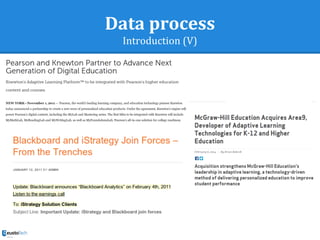
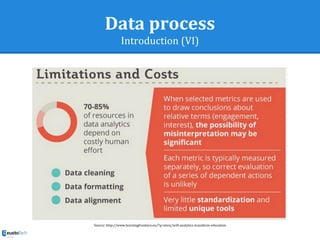
![Data process
Introduction (VII)
A brief comparison of the two fields (George Siemens and Ryan Baker [SiemensBaker2012])](https://image.slidesharecdn.com/da-140718101721-phpapp01/85/Data-Analytics-01-Data-selection-and-capture-46-320.jpg)



![Data process
Questions (III)
Horizon Report 2012 [HR2012]](https://image.slidesharecdn.com/da-140718101721-phpapp01/85/Data-Analytics-01-Data-selection-and-capture-50-320.jpg)
![Data process
Questions (IV)
1) Adaptive testing, tracking and reporting
● Progress summary, daily activity report, class
goals report, progress report, student activity
report, student focus report, etc [Khan2012]
● By using various analytics tools, students can
review their learning progress and teachers
are also supported in how to personalise
learning for students in need for more help in
specific areas](https://image.slidesharecdn.com/da-140718101721-phpapp01/85/Data-Analytics-01-Data-selection-and-capture-51-320.jpg)






![Data process
Questions (XI)
“Accounting tools… do not simply
aid the measurement of economic
activity, they shape the reality they
measure”
[GayPryke2002]](https://image.slidesharecdn.com/da-140718101721-phpapp01/85/Data-Analytics-01-Data-selection-and-capture-58-320.jpg)



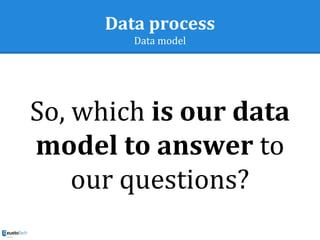

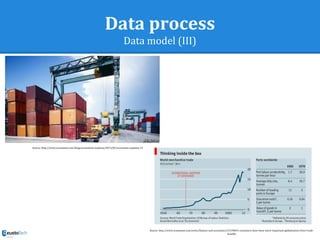
![Data process
Data model (IV)
The best approach that we have
found for this task is constituted by
the theory of eLearning functions
Reinmann [Reinmann2006]](https://image.slidesharecdn.com/da-140718101721-phpapp01/85/Data-Analytics-01-Data-selection-and-capture-65-320.jpg)
![Data process
Data model (V)
[Reinmann2006]](https://image.slidesharecdn.com/da-140718101721-phpapp01/85/Data-Analytics-01-Data-selection-and-capture-66-320.jpg)
![Data process
Data model (VI)
Example
[Mazza2012]](https://image.slidesharecdn.com/da-140718101721-phpapp01/85/Data-Analytics-01-Data-selection-and-capture-67-320.jpg)
![Data process
Data model (VII)
Example
This model answers the monitoring questions:
● Which way of eLearning enables to reach the
given objectives?
● By which means (functions, tools) does the
LMS enable these ways of learning?
● How is the use of these means traced in the log
files (activity log codes)?
[Mazza2012]](https://image.slidesharecdn.com/da-140718101721-phpapp01/85/Data-Analytics-01-Data-selection-and-capture-68-320.jpg)
![Data process
Data model (VIII)
[Mazza2012]](https://image.slidesharecdn.com/da-140718101721-phpapp01/85/Data-Analytics-01-Data-selection-and-capture-69-320.jpg)

![Data process
Data sources (II)
“Learning is a complex social activity”
[Siemens2012]
Lots of data
Lots of tools
Humans to make sense](https://image.slidesharecdn.com/da-140718101721-phpapp01/85/Data-Analytics-01-Data-selection-and-capture-71-320.jpg)

![Data process
Data sources (IV)
● The world of technology has changed
[Eaton2012]
○ 80% of the world’s information is unstructured
○ Unstructured data are growing at 15 times the rate
of structured information
○ Raw computational power is growing at such an
enormous rate that we almost have a supercomputer
in our hands
○ Access to information is available to all](https://image.slidesharecdn.com/da-140718101721-phpapp01/85/Data-Analytics-01-Data-selection-and-capture-73-320.jpg)










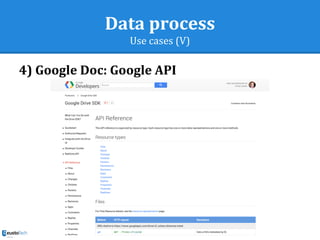





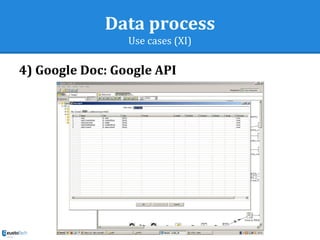

![References
[CampbellOblinger2007] Campbell, John P., Peter B. DeBlois, and Diana G. Oblinger. "Academic analytics: A new tool for a new era." Educause
Review 42.4 (2007): 40.
[Clow2012] Clow, Doug. "The learning analytics cycle: closing the loop effectively." Proceedings of the 2nd International Conference on Learning
Analytics and Knowledge. ACM, 2012.
[Cooper2012] Cooper, Adam. "What is analytics? Definition and essential characteristics." CETIS Analytics Series 1.5 (2012): 1-10.
[DronAnderson2009] Dron, J., & Anderson, T. (2009). On the design of collective applications. In Proceedings of the 2009 International Conference
on Computational Science and Engineering, 4, 368–374.
[Dyckhoff2010] Dyckhoff, Anna Lea, et al. "Design and Implementation of a Learning Analytics Toolkit for Teachers." Educational Technology &
Society 15.3 (2012): 58-76.
[Eaton2012] Chris Eaton, Dirk Deroos, Tom Deutsch, George Lapis & Paul Zikopoulos, “Understanding Big Data: Analytics for Enterprise Class
Hadoop and Streaming Data”, p.XV. McGraw-Hill, 2012.
[GayPryke2002] Cultural Economy: Cultural Analysis and Commercial Life (Culture, Representation and Identity series) Paul du Gay (Editor),
Michael Pryke. 2002.
[HR2012] NMC Horizon Report 2012 http://www.nmc.org/publications/horizon-report-2012-higher-ed-edition
[Jenkins2013] BBC Radio 4, Start the Week, Big Data and Analytics, first broadcast 11 February 2013 http://www.bbc.co.
uk/programmes/b01qhqfv
[Khan2012] http://www.emergingedtech.com/2012/04/exploring-the-khan-academys-use-of-learning-data-and-learning-analytics/
[LACE2013] Learning Analytics Community Exchange http://www.laceproject.eu/
[LAK2011] 1st International Conference on Learning Analytics and Knowledge, 27 February - 1 March 2011, Banff, Alberta, Canada https://tekri.
athabascau.ca/analytics/
[Mazza2006] Mazza, Riccardo, et al. "MOCLog–Monitoring Online Courses with log data." Proceedings of the 1st Moodle Research Conference. 2012.
[Reinmann2006] Reinmann, G. (2006). Understanding e-learning: an opportunity for Europe? European Journal of Vocational Training, 38, 27-42.
[SiemensBaker2012] Siemens & Baker (2012). Learning Analytics and Educational Data Mining: Towards Communication and Collaboration.
Learning Analytics and Knowledge 2012. Available in .pdf format at http://users.wpi.edu/~rsbaker/LAKs%20reformatting%20v2.pdf](https://image.slidesharecdn.com/da-140718101721-phpapp01/85/Data-Analytics-01-Data-selection-and-capture-92-320.jpg)
